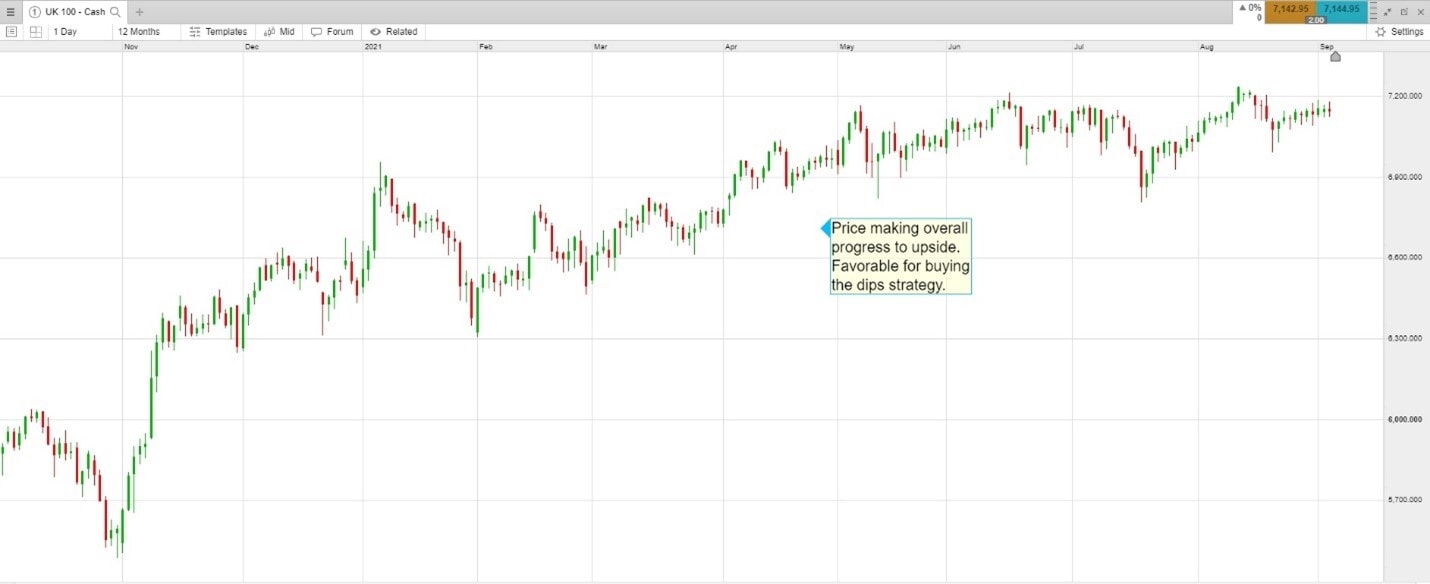The concept is centred around buying (going long on) a stock, index, or other asset after it is has declined in value. The hope is that buying it at a lower price than what it has traded at in the past may be a bargain, and a profit can be made if the price moves higher following the dip.
A dip doesn’t have a fixed value attached to it. To a day trader, a dip may be a pullback of 1% from a recent high. A longer-term investor may consider a drop of 20% a dip. Therefore, ‘buying the dip’ is a concept, and only becomes a strategy once some personal rules are put in place regarding how to define and trade a dip.
Some traders feel that the further a stock or asset has dropped, the more upside potential the trade presents. That can sometimes be true, but other times an asset’s price keeps dropping. Therefore, risk-management is key if you’re trying to buy the dip, as is deciding when to take profit if the price does rise following the dip (risk and profit taking are discussed in more detail later).
Short-term traders will typically look for small dips and small bounces. They may not be in the trade for big moves over long periods of time. On the other hand, investors may look for bigger dips to buy and then also try to hold the trades for years, potentially capturing large upside moves.
The S&P 500 index (or related ETFs) is commonly used for a buy the dip strategy. This is because throughout its history, it has consistently recovered to new highs following a dip. That said, it can sometimes take years for this to happen.



